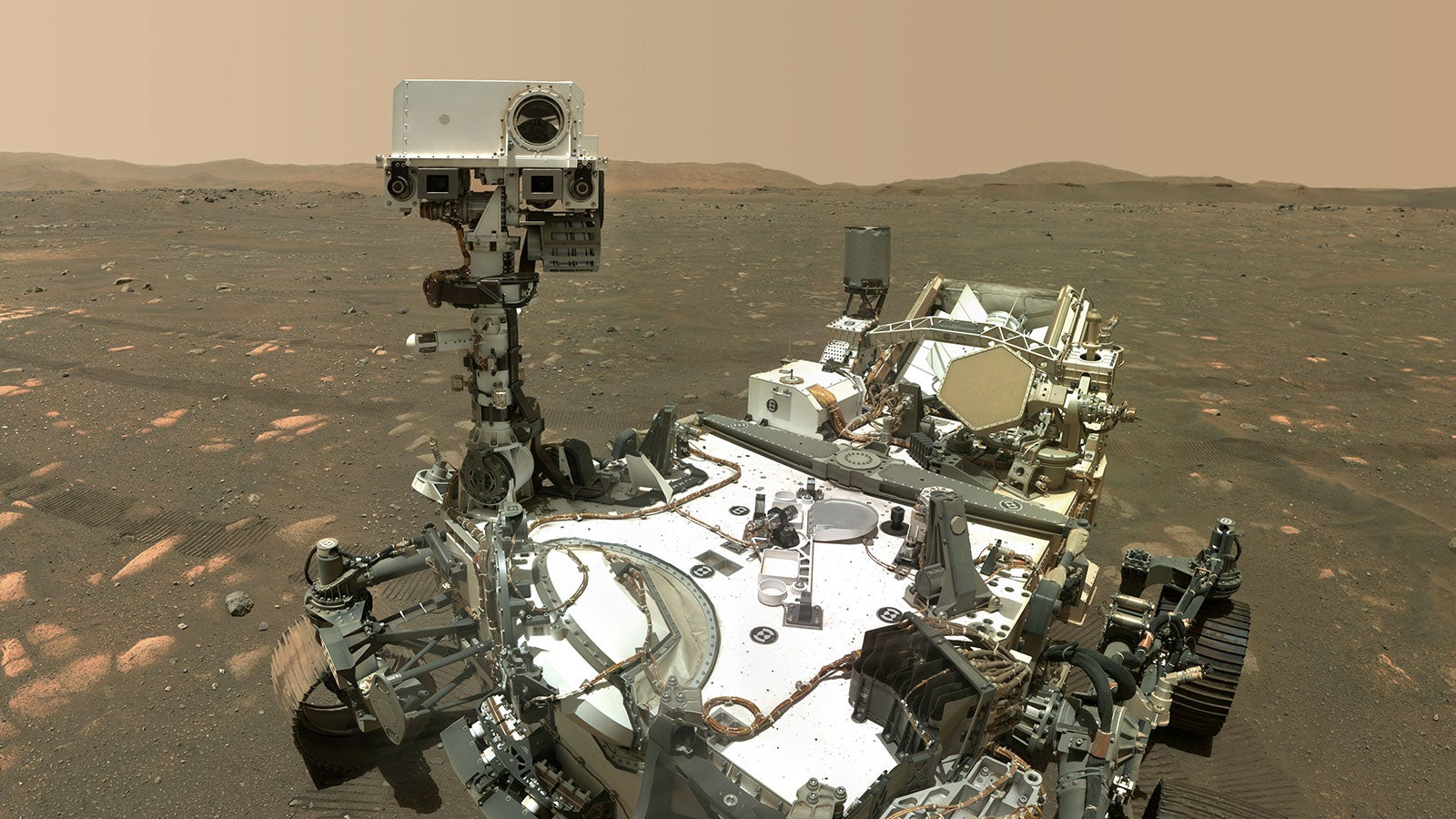Nasa’s Perseverance rover has discovered ‘organic molecules’ on Mars
The rover also found that Mars’ Jezero Crater has had water ‘multiple times over the eons’, but this does not necessarily mean there is proof of alien life

Nasa’s Perseverance rover has discovered “organic molecules” in rocks on Mars’ Jezero Crater.
Bedrock from the crater has interacted with water “multiple times over the eons”, Nasa’s Jet Propulsion Laboratory reports.
The rover’s SHERLOC (Scanning Habitable Environments with Raman & Luminescence for Organics & Chemicals) instrument found that organic material was not only on the interior of the rock, but also in the dust on other rocks.
However this does not necessarily mean that life once existed on Mars, as there are both biological and non-biological mechanisms that could be responsible for the organics’ presence.
“Curiosity also discovered organics at its landing site within Gale Crater,” said Luther Beegle, SHERLOC principal investigator at Nasa’s Jet Propulsion Laboratory
“What SHERLOC adds to the story is its capability to map the spatial distribution of organics inside rocks and relate those organics to minerals found there. This helps us understand the environment in which the organics formed. More analysis needs to be done to determine the method of production for the identified organics.”
It will not be until the samples have been returned to Earth that scientists will be able to properly examine the biosignatures, and hypothesise whether other signs of life could be preserved as well.
The rover has 43 sample tubes – six of which have been sealed yet. Four of them have rock cores, one has a sample of Martian atmosphere, and the last contains “witness” material to check for contamination the rover could have brought from Earth.
Perseverance has also discovered that the rock it has been travelling on was formed by red-hot magma, altered by water on several occasions that will give geologists the knowledge to understand the early history of the planet.
The better Nasa and other agencies can work out when water was common on Mars’ surface, the more efficient they will be at hunting for evidence of alien life.
“I was beginning to despair we would never find the answer,” said Perseverance Project Scientist Ken Farley of Caltech in Pasadena.
“But then our PIXL [Planetary Instrument for X-ray Lithochemistry] instrument got a good look at the abraded patch of a rock from the area nicknamed ‘South Séítah,’ and it all became clear: The crystals within the rock provided the smoking gun.”
Subscribe to Independent Premium to bookmark this article
Want to bookmark your favourite articles and stories to read or reference later? Start your Independent Premium subscription today.

Join our commenting forum
Join thought-provoking conversations, follow other Independent readers and see their replies